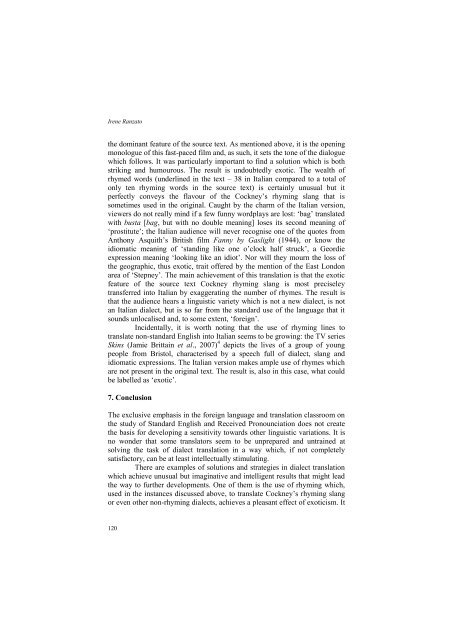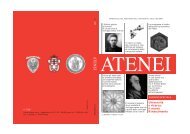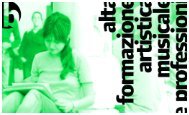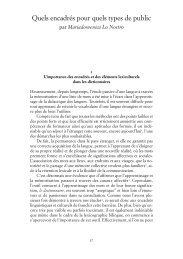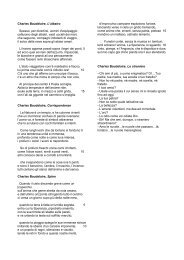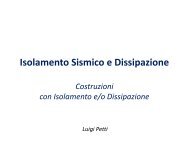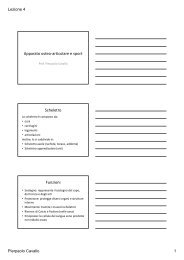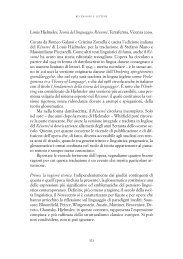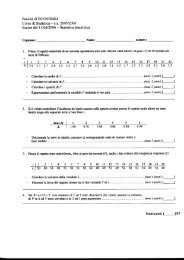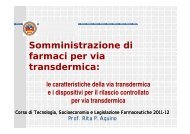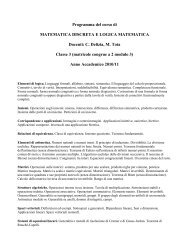Localising Cockney: translating dialect into Italian - Università degli ...
Localising Cockney: translating dialect into Italian - Università degli ...
Localising Cockney: translating dialect into Italian - Università degli ...
You also want an ePaper? Increase the reach of your titles
YUMPU automatically turns print PDFs into web optimized ePapers that Google loves.
Irene Ranzato<br />
the dominant feature of the source text. As mentioned above, it is the opening<br />
monologue of this fast-paced film and, as such, it sets the tone of the dialogue<br />
which follows. It was particularly important to find a solution which is both<br />
striking and humourous. The result is undoubtedly exotic. The wealth of<br />
rhymed words (underlined in the text – 38 in <strong>Italian</strong> compared to a total of<br />
only ten rhyming words in the source text) is certainly unusual but it<br />
perfectly conveys the flavour of the <strong>Cockney</strong>‟s rhyming slang that is<br />
sometimes used in the original. Caught by the charm of the <strong>Italian</strong> version,<br />
viewers do not really mind if a few funny wordplays are lost: „bag‟ translated<br />
with busta [bag, but with no double meaning] loses its second meaning of<br />
„prostitute‟; the <strong>Italian</strong> audience will never recognise one of the quotes from<br />
Anthony Asquith‟s British film Fanny by Gaslight (1944), or know the<br />
idiomatic meaning of „standing like one o‟clock half struck‟, a Geordie<br />
expression meaning „looking like an idiot‟. Nor will they mourn the loss of<br />
the geographic, thus exotic, trait offered by the mention of the East London<br />
area of „Stepney‟. The main achievement of this translation is that the exotic<br />
feature of the source text <strong>Cockney</strong> rhyming slang is most preciseley<br />
transferred <strong>into</strong> <strong>Italian</strong> by exaggerating the number of rhymes. The result is<br />
that the audience hears a linguistic variety which is not a new <strong>dialect</strong>, is not<br />
an <strong>Italian</strong> <strong>dialect</strong>, but is so far from the standard use of the language that it<br />
sounds unlocalised and, to some extent, „foreign‟.<br />
Incidentally, it is worth noting that the use of rhyming lines to<br />
translate non-standard English <strong>into</strong> <strong>Italian</strong> seems to be growing: the TV series<br />
Skins (Jamie Brittain et al., 2007) 4 depicts the lives of a group of young<br />
people from Bristol, characterised by a speech full of <strong>dialect</strong>, slang and<br />
idiomatic expressions. The <strong>Italian</strong> version makes ample use of rhymes which<br />
are not present in the original text. The result is, also in this case, what could<br />
be labelled as „exotic‟.<br />
7. Conclusion<br />
The exclusive emphasis in the foreign language and translation classroom on<br />
the study of Standard English and Received Pronounciation does not create<br />
the basis for developing a sensitivity towards other linguistic variations. It is<br />
no wonder that some translators seem to be unprepared and untrained at<br />
solving the task of <strong>dialect</strong> translation in a way which, if not completely<br />
satisfactory, can be at least intellectually stimulating.<br />
There are examples of solutions and strategies in <strong>dialect</strong> translation<br />
which achieve unusual but imaginative and intelligent results that might lead<br />
the way to further developments. One of them is the use of rhyming which,<br />
used in the instances discussed above, to translate <strong>Cockney</strong>‟s rhyming slang<br />
or even other non-rhyming <strong>dialect</strong>s, achieves a pleasant effect of exoticism. It<br />
120


